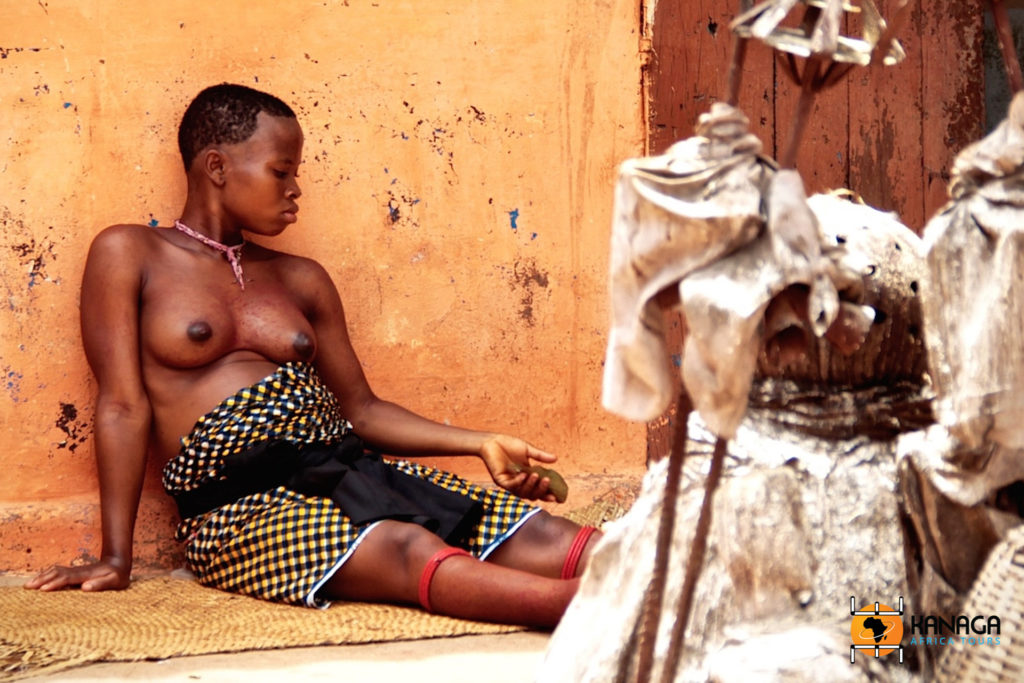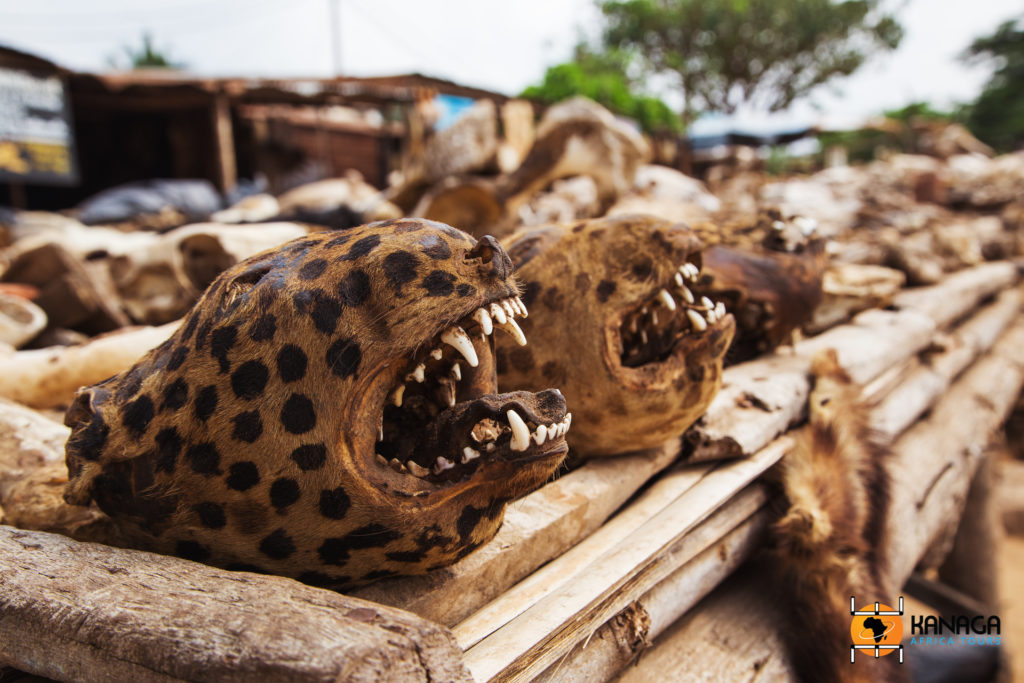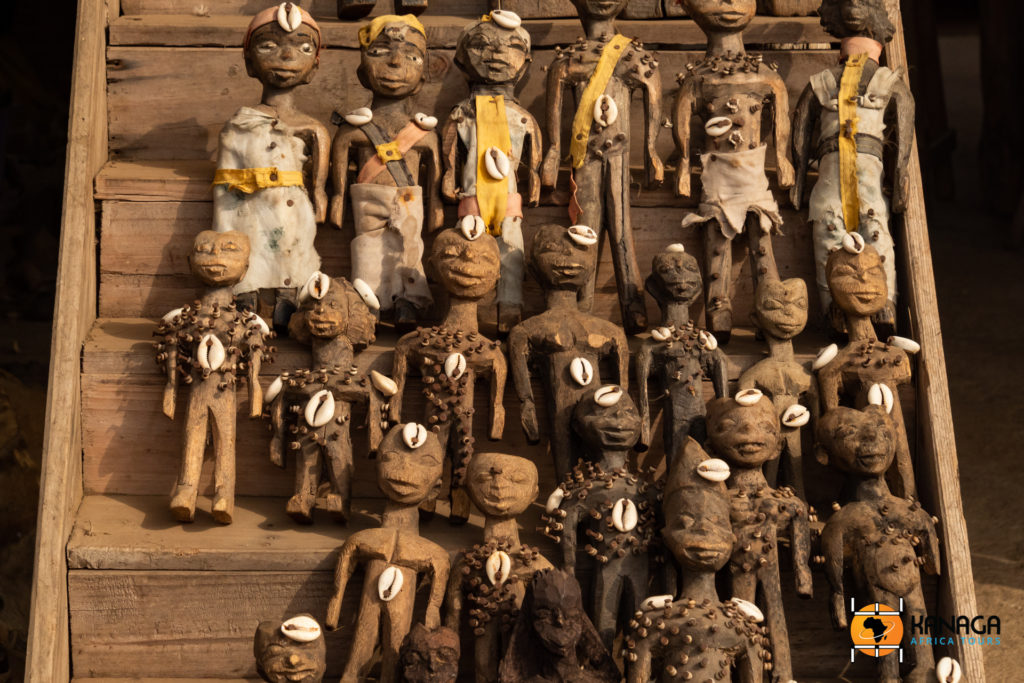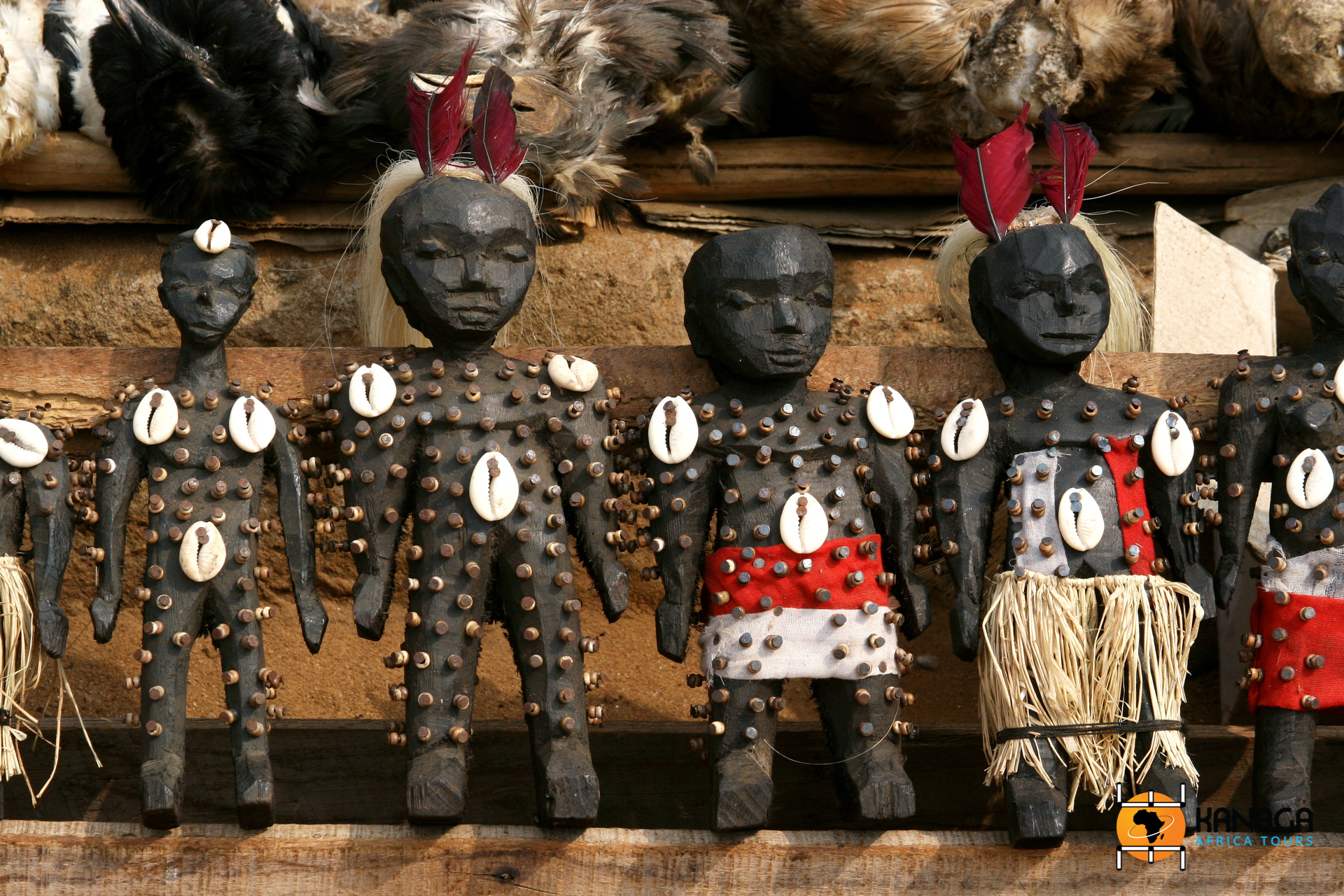The towns of Togoville, Agbodrafo and Aneho, lying between the shores of Lake Togo, the banks of the Mono River and the palm-fringed beaches of the Atlantic Coast, were the most important centres for the sorting and sale of slaves to Europeans.
Hard to believe, visiting them today. But as soon as you climb the stairs of a small, dilapidated colonial house, hidden in the Agbodrafo forest, you are suddenly suspended in a sad, timeless dimension. It is in these places that the ancient communities of the Mina, Guin and Ewe, the main interlocutors in economic dealings with European merchants, settled. It was on the northern shores of the lake, in peaceful Togoville, that the treaty between King Mlapa III and the German explorer Gustav Nachtigal was signed in 1884, establishing German sovereignty over Togoland.
Today, these places, steeped in history and memory, are the most important spiritual centres for the Voodoo religion. But they were already so in the 17th century, and it was probably no coincidence that the settlers chose to set up their missions here for the Christianisation of the local populations. They succeeded, perhaps in part. Today, even those who profess to be Christian in Togo continue to follow the traditional religion in syncretism and to please the powerful voodoo deities.
Around the revered Togoville Catholic Cathedral, built in 1910, where the Virgin Mary is said to have appeared in 1973, lies a village dotted with protective deities and fetishes. One of the country’s most powerful voodoo priestesses operates here, and every year thousands of worshippers arrive in her presence, barefoot and dressed only in a sarong, to ask for her blessing in exchange for a sacrifice to the deities.
Every year in December, the town of Aneho celebrates the Black Divinities Festival, a festival of voodoo culture and traditions, with shows, concerts and exhibitions, but also with a “behind the scenes” programme of propitiatory sacrifices, ceremonies and rituals, during which the intercession of the priest adept is still requested, through trance and possession.
If voodoo is also spiritual healing, if priests and priestesses are the doctors of the soul, then the markets are real pharmacies.
One of the most traditional and lively markets in Togo is the one held every Friday in Vogan. Accessible from Togoville or Aného in about forty minutes, it is an experience that will bring you into contact with one of the country’s truest realities. While Chinese products have now reached the stalls of all West African markets, here you will find little or no Chinese products: from dried fish to spices, from fabrics to crockery, from cereals to the animal sector, everything is authentic, African and 0 km. But the most interesting area is undoubtedly that of fetishes. Animal skins, bones and skulls, tortoises, feathers, powders and various concoctions, stuffed snakes, amulets and good luck charms, iron bells that “chase away spirits”, dried leaves and plants represent a real traditional pharmacy.
While the Vaugan market is a general market for all types of merchandise and is held weekly, the Lomé Fetish Market is a place specialising in the sale of objects and raw materials used in voodoo rituals. In some of the blocks of flats, there are consultation rooms where the fetishists will prescribe the ingredients needed to solve the problem afflicting their patient. Displayed on counters outside, just like any pharmacy, are the products to be purchased, which the feticheur will transform into medicines, just like any galenic product.







